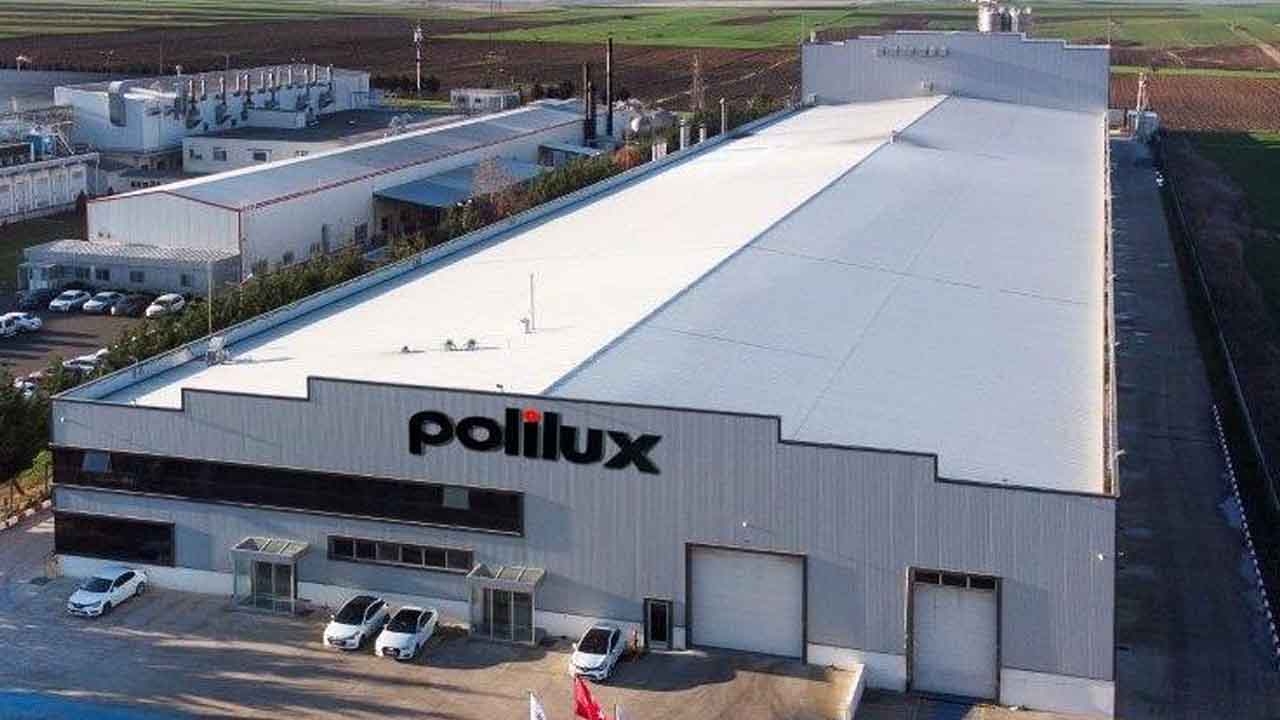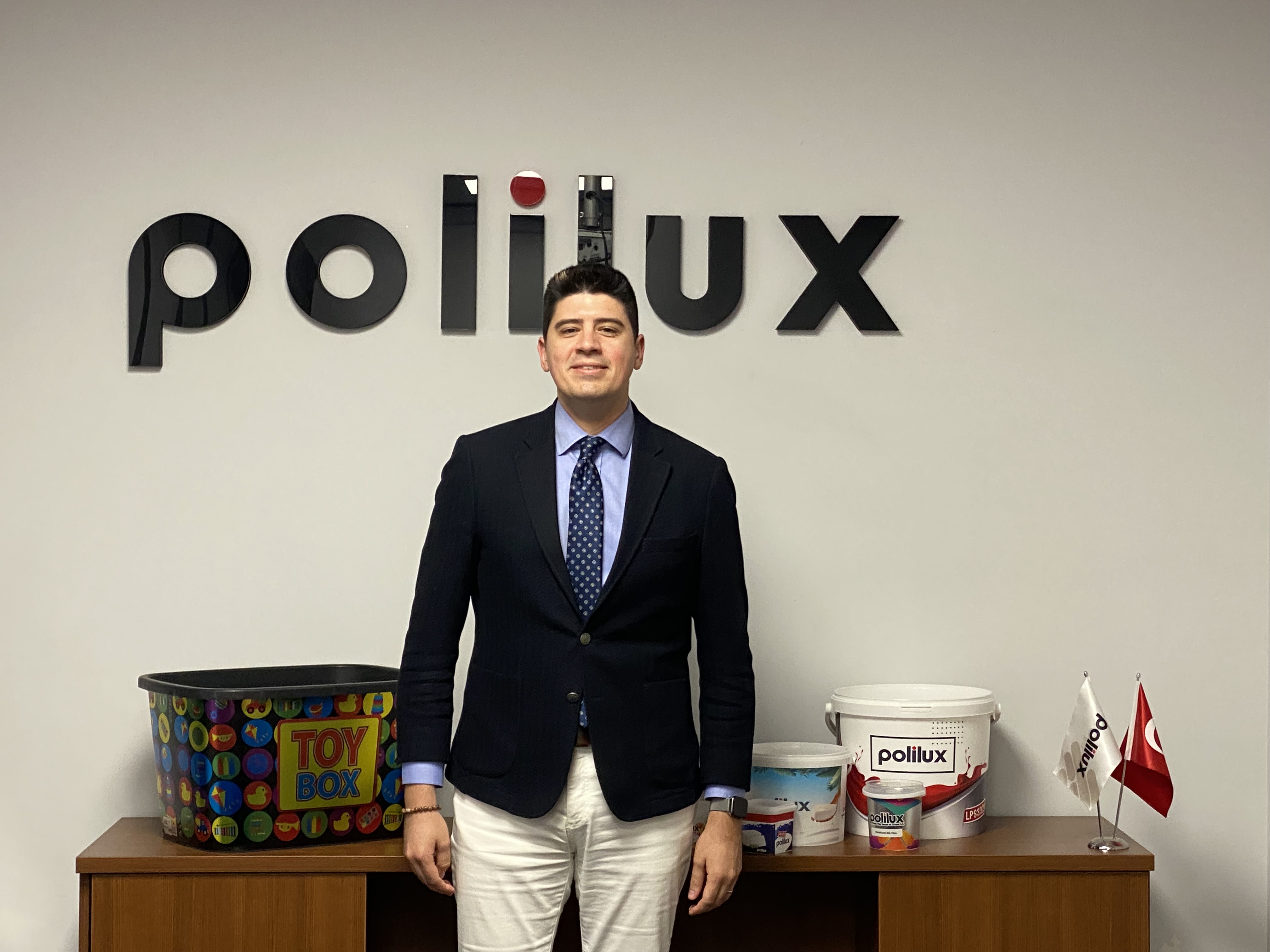Polilux expands IML reach
The Turkish BOPP manufacturer is now the number three supplier of IML films to the European market, with ambitious plans for global expansion.

Turkey is home to a major BOPP film manufacturing industry, and one of its most recent members is Polilux, now one of the top three IML suppliers to the European market with an overall production capacity of 30,000 tons a year.
Today labeling and flexible packaging are the company’s main fields of application. In labels, Polilux has become a major supplier of BOPP in-mold labeling materials across Europe and a substantial supplier of wraparound labels and filmic face materials for PS laminates.
Tayanç Top was recruited as head of IML sales at Polilux in October 2020 and started a rapid acceleration in this market segment.
‘We asked, how many BOPP companies produce IML? Very few. So that needed to be our key focus,’ recalls Top.
Polilux differentiated itself from its early days as a supplier of highly technical products, keeping away from the commodity market. ‘There are more than 200 BOPP manufacturing companies, so Polilux needs to produce products that everyone cannot make,’ says Top.
The success of this strategy can be seen in the booming production figures since Ender Ozmergen’s acquisition.
In 2019, Polilux produced 15,000 tons of BOPP film and 6,900 tons of IML film. A year later, this had risen to 22,000 tons and 7,900 tons of IML, which was still mainly sold to Turkish converters. As Polilux expanded its sales effort to the wider European market, production of IML increased to 8,600 tons in 2021 and 12,500 tons last year.
Around half of all IML film production is now exported. Geographically, Poland is emerging as a key IML market and Polilux claims to be the leading player there. The company has also developed export markets outside Europe, such as Brazil and the US.


The IML difference
What makes BOPP IML different from BOPP flexible packaging, and why is it a higher value-added product?
The most obvious difference between the two applications is the number of process steps involved from printing to finished pack, which defines the technical requirements of the film. Flexible packaging is a simple two-stage process – print/ lamination followed by filling and sealing of the pack. IML has one additional step – the injection process – which has its own unique technical and performance requirements.
The second key difference lies in the printing process. Flexible packaging is mainly printed on CI flexo and gravure presses using standard water- or solvent-based inks. IML labels are printed mainly on sheetfed presses and need to be printable with the UV, LED-UV and conventional ink systems used in offset printing.
Narrow web flexo has much lower investment costs than (sheetfed) offset - but offset has a major advantage because it is printing in a large format, and much of the IML market is for larger format containers
Another key difference is that flexible packaging printed on gravure or CI flexo presses is a reel-to-reel process. IML labels are printed either reel-to-sheet or sheet-tosheet, after which the sheets are cut into strips, which is an additional process step.
IML label materials require mechanical properties to cope with these multiple converting and injection process steps. Additionally, IML materials must be static-free at the point of application. Any residual static will make labels stick together when picked up from the magazine and loaded into the mold.
With a technical service background, Top has been involved both in developing new products and consulting with existing and potential customers to ensure Polilux’s IML materials perform properly at each process step.
‘I am always speaking to ink producers, press manufacturers and molding machine manufacturers so we can understand any potential issues at an early stage, and I can inform our technical team what is coming, I then need to communicate that learning to my customers,’ notes Top.
‘The key to successful production of IML materials is consistent formulation,’ says Top. ‘Maintaining quality is like keeping an egg vertical – you always need to be touching the egg to stop it from falling. You need a very consistent raw material supply because any changes will affect your customer’s process or their customers’ process or their customers’ customers. There are more variables than in flexible packaging and you need to control them all. This is why most other BOPP producers don’t want to manufacture IML. And you need very good after-sales support.’
The critical requirement for consistency means Polilux will not use raw materials incorporating post-consumer recycled plastics. ‘We will require a very high level of quality control and today that is not available to our satisfaction,’ explains Top.
Growing the market
IML’s share of the global labels market has hovered unchanged at around 2 percent for many years, with the European IML market estimated to total around 24,000 tons per year.
This means suppliers need to increase their share of a relatively static market to grow in the IML space. ‘And unlike in a commodity market this is not because of low pricing,’ says Top. ‘It is a matter of the quality of materials and the support services you provide through to the end of the process.’
This all makes IML a tough market to break into. ‘In the early
days, I convinced one customer to trial our material and then
the market started to spread the word. Then other customers
started to knock on your door. It’s not easy to break the mold of established suppliers.’
Looking ahead, Top is optimistic that sustainability requirements will accelerate the adoption of IML technology by the major brands.
‘IML is a very sustainable technology because the complete package is effectively a monomaterial – a BOPP label and a PP container. We do not have to wash off labels and there are no adhesive residues. This is a mono material and ready to recycle.’
Demographic changes will enhance IML’s favorable sustainability characteristics, Top believes. ‘People live in smaller households where they do not have dishwashers and they have less time to cook, so this will increase the consumption of single-use food containers, where you eat the food and throw it away. IML is very suitable for this. After the food is done you can easily recycle the pack.’
Technology developments
IML processing technology continues to develop, with faster and more efficient molding machines which make it more important than ever that IML materials have no problems with gaining or losing static.
‘At the same time printing presses are getting faster and faster and also cutting and finishing units, so your material technology also needs to change.’
Material downgauging is a continuous process, but in IML there are process limits to how thin manufacturers can go. Currently, the industry standard is 60 microns, although some grades produced by Polilux are down to 55 microns. ‘The question is, will downgauged materials be able to handle faster printing presses and go into the injector without problems?,’ asks Top.
Going forward Polilux will also be looking more at the blow-mold market, although that will not take the focus away from IML.
‘Blow mold labels have been our portfolio for the last two years,’ says Top. ‘The numbers are low but steady and growing. Now we are developing a machine, the first of its kind, that will be able to produce PS, wraparound and blow molding films.’
Narrow web growth
Although IML is overwhelmingly a sheetfed offset application, Top sees narrow web as an interesting technology for IML production. ‘I certainly see a growth in the narrow web IML market. Two years ago, we adapted our product to work with every print process including UV flexo. Narrow web flexo has much lower investment costs than offset – but offset has a major advantage because it is printing in a large format, and much of the IML market is for larger format containers.’
This is a serious limitation for narrow web. ‘An important application for our opaque white IML is for 20L containers, and you simply cannot print that with the narrow web format – and this is 25 percent of our business. IML for smaller, single-use cups are printable with narrow web so this is a potential growth area. And all the major narrow web press brands can handle IML materials on a modern press.’
There is no appreciable performance difference using the heavier ink weight of UV compared to conventional offset inks when it comes to post-print processing steps
Labelexpo Europe 2023 saw an increased interest in mid-web (26in/630mm) flexo presses, and this wider format would open up more opportunities in the IML market, says Top.
‘When the presses get wider you can go after more work.’ Today’s flexo presses also have the ability to print multiple jobs on the same plate using a fixed set of extended color
gamut inks. This is something offset printers have long been able to do, and it greatly enhances their productivity.
Polilux has only one customer printing IML labels on a digital press. ‘There are some challenges in digital printing. And
it generally needs coating, so is not great for mass production.’
Stay up to date
Subscribe to the free Label News newsletter and receive the latest content every week. We'll never share your email address.


